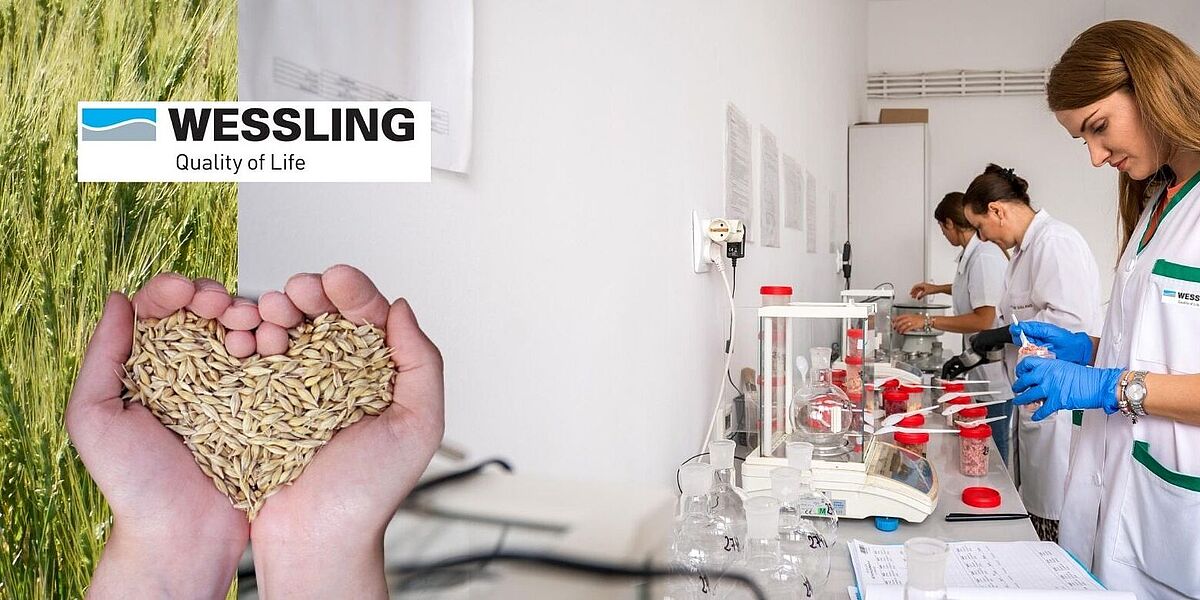Hazardous poisons in cereals: mycotoxins and the food chain
Why is so important regular testing for mycotoxin in cereals?
The specialists of WESSLING Romania independent laboratory answered these questions

It has long been known in the food industry that toxins produced by tiny mushrooms can be dangerous to our health. These mycotoxins are very easily produced by some microscopic fungi that parasitize plants in areas with warm climates.
Mycotoxins are by-products of fungi like antibiotics, only they are toxic to animals and humans. Their toxicity is quite high and so very small amounts can negatively affect the health of the body, affecting the kidneys, liver, endocrine system and neurology. Mycotoxins pose as high a food risk as additives, synthetic contaminants and pesticides. Almost all mycotoxins are cytotoxic and can break down cell membranes and prevent or influence the synthesis of DNA, RNA and proteins.
Currently about 300-400 substances have been classified as mycotoxins, but only 20-30 mycotoxins are monitored by the authorities and are considered the most toxic and widespread.
Hot, dry weather and unfavorable storage conditions favor grain contamination
Mycotoxins can occur in both natural and artificial environments. Fungus invasion and mycotoxin production in cereals is favored by factors such as: drought, excessive rainfall during harvesting, insect attack, delayed drying after harvesting, inadequate storage (inadequate ventilation that allows moisture to accumulate).
Most mycotoxins are resistant to high temperatures (baking, boiling and in some cases also resistant to frying). Many toxins are also resistant to industrial food processing, so in order to have mycotoxin-free foods, the raw material (wheat, milk, vegetables, meat, etc.) must be analyzed.
Due to the fact that they are resistant to processing, they can be found in bread, breakfast cereals, wine, beer, etc. By processing only the amount of mycotoxins can be reduced and not their total elimination.
Legislative regulations for maximum acceptable levels
The maximum acceptable levels of mycotoxins in foodstuffs in the European Union are regulated by various laws and directives. The limit values to be taken into account in international trade are contained in the Codex Alimentarius. The aim is to keep contamination as low as possible.
Regulation (EC) no. Commission Regulation (EC) No 401/2006 of 23 February 2006 lays down the procedures for taking samples and methods of analysis for the official control of the mycotoxin content of foodstuffs.
Regulation (EC) no. Commission Regulation (EC) No 152/2009 of 27 January 2009 lays down the methods of sampling and analysis for the official control of feedingstuffs.
Different values are set for foods intended for direct human consumption, consumed by infants and young children and for each animal species.
The main mycotoxins found in food are: Aflatoxins, DON, Zearalenone, Ochratoxin A, Fumonisin. At WESSLING Romania, every effort is made to ensure the safety of agricultural crops and compliance with legal regulations.
Wessling Laboratories provides mycotoxin assays for both raw materials and processed products.
To see the full range of mycotoxin determinations, feel free to contact us.

